Kymeta fulfilling customer orders for multi-orbit, COTM FPA for military users
Kymeta‘s Osprey u8 HGL, a hybrid geostationary/low Earth orbit (GEO/ LEO/LTE) terminal purpose-built for military users, is now shipping — this marks the first, commercially available, multi-orbit terminal and the first multi-orbit terminal for Eutelsat OneWeb’s LEO network.
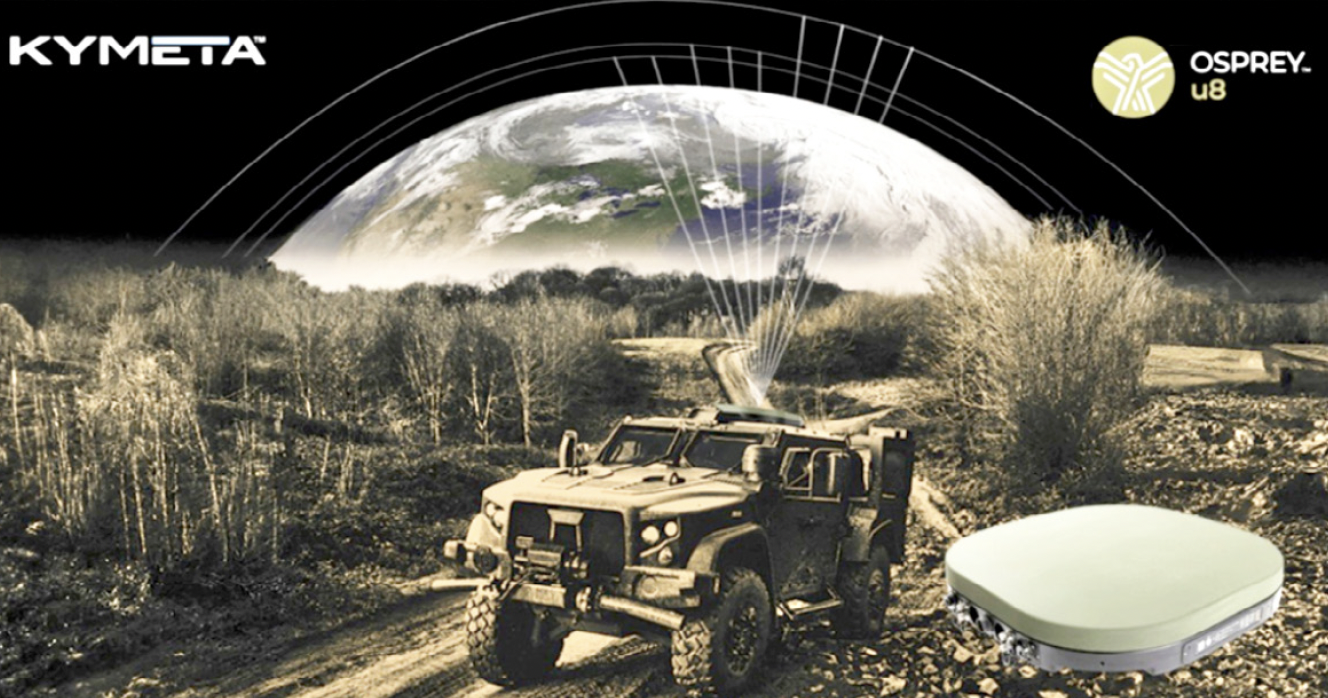
Kymeta announced the official launch in October of last year and is now fulfilling order backlogs.
In February, the Kymeta team demonstrated in the field the capabilities of the new Osprey u8 HGL delivering resilient, auto-PACE ready communications for the armed forces to meet the demands of challenging and rugged military environments.
The multi-orbit, multi-network capabilities of the Osprey u8 HGL terminal will offer even greater availability, while being durable, low power consuming, having low visibility, and easy to use.
The Osprey u8 HGL includes a field swappable modem cartridge and a OneWeb modem to enable connectivity with the Eutelsat OneWeb LEO network.
At launch, an iDirect 950mp cartridge is available enabling TRANSEC services over GEO. Other cartridge configurations will be available soon enabling end users to customize their terminal configuration based on their mission needs.
“The Kymeta Osprey HGL has a unique capability to address government requirements in support of government PACE plans,” said Ian Canning, Chief Operating Officer, OneWeb Technologies. “The Osprey supports multi-network/orbit requirements through the concurrent LTE/satellite configuration with the added benefit of now being able to add OneWeb LEO capabilities.”
Jon Osler, Senior Vice President Global Sales and Services of Kymeta, said, “In the contemporary military landscape, mobile connectivity has become indispensable for achieving success. Unlike any other sector, the military relies heavily on dependable, adaptable, and resilient on-the- go communication systems to fulfill its operational and training needs.
We take pride in our longstanding partnership with the military, delivering meet and exceed expectations.”
Saber Astronautics’ Now Hosts Arlula’s EO Application on the Space Application Marketplace
Saber Astronautics has integrated Arlula’s Earth Observation (EO) Data Application into Saber’s Space Application Marketplace (SAM), a significant milestone marking the first time third-party EO data is available on the Space Cockpit platform.Arlula’s EO application now hosted on Saber Astronautics’ Space Application Marketplace.
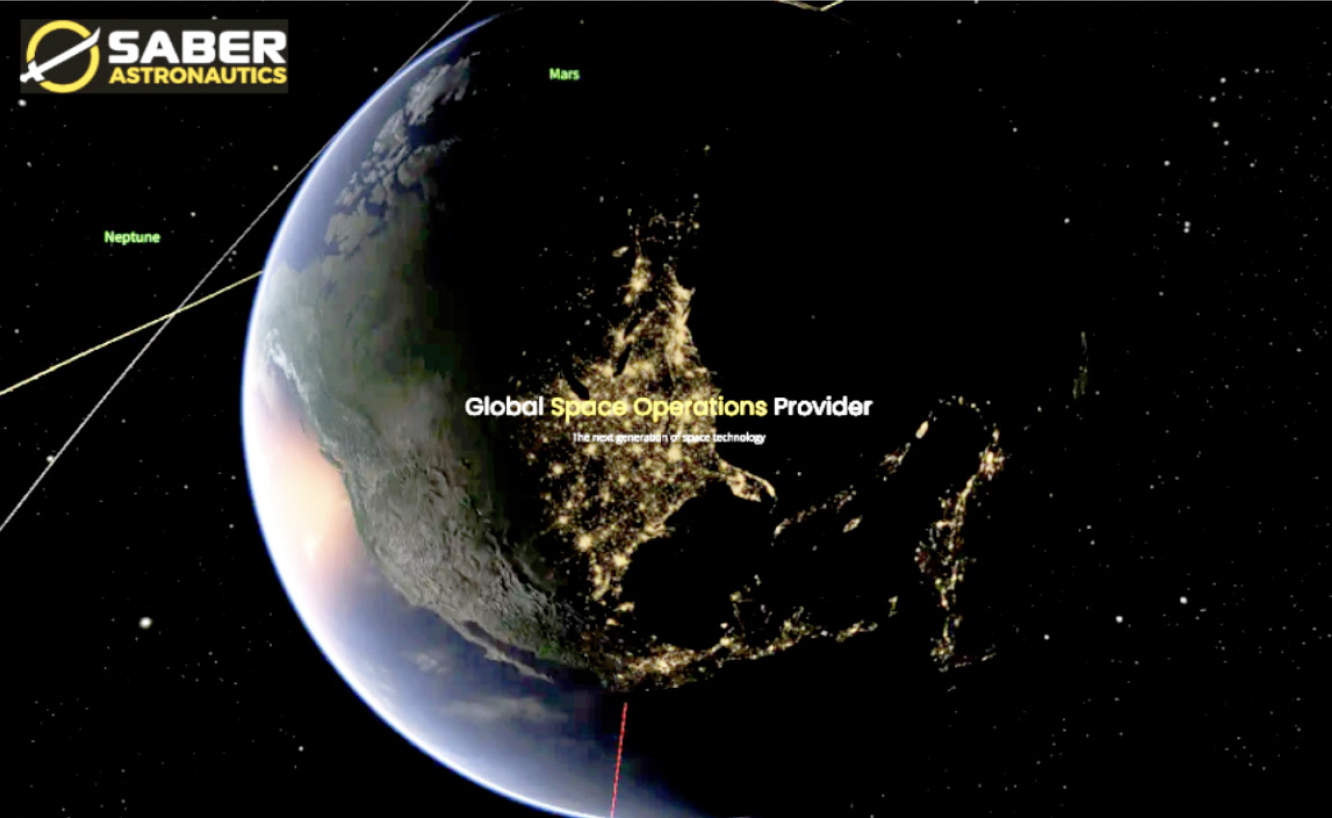
Originating from Australia, Arlula allows users from around the globe to effortlessly obtain, manage, and analyze satellite imagery on a grand scale.
This collaboration highlights the vital synergy between U.S. and non-U.S. partners, aimed at enhancing the offerings to the United States Space Force (USSF) and its allies. It demonstrates the global cooperation essential for advancing the space sector.
The Space Application Marketplace (SAM) is funded by the USSF and built upon the robust foundation of the Space Cockpit battle management software that is deployed and in use by thousands of operators in the USSF and allied systems. Space Cockpit received its Continuous Authority to Operate (CATO) in 2019, allowing broad distribution across the Department of Defense (DoD).
Building on Space Cockpit allows SAM members to greatly reduce the deployment waiting period from years to only a few months, overcoming many of the challenges deploying to the U.S. DoD.
Arlula’s EO Data Application represents the first, third-party satellite imagery solution within SAM and also sets a new standard for satellite imagery solutions. With an expansive archive at its core and direct imagery tasking on the horizon, the application aims to dramatically improve situational awareness for space operators.
“Embedding Arlula’s Earth Observation app directly into Space Cockpit represents a fundamental leap forward in operational agility,” said Dr. Jason Held, CEO of Saber Astronautics. “It merges real-time, actionable satellite imagery within live space operations, so operators watching space traffic can also monitor actions on the ground.”
Sebastian Chaoui, Arlula’s CEO, said, “By combining Arlula’s advanced earth observation infrastructure within Saber Astronautics’ Space Cockpit, users are able to effortlessly acquire and manage satellite imagery on an unprecedented scale. This will help to redefine how we secure land, air and space domains.” This integration highlights Saber’s dedication to advancing space technology, offering a holistic solution that not only bridges the gap known as the “Valley of Death” in software companies looking to reach the U.S. DoD but also facilitates swift deployment for operators eager to experiment with new applications.”
For more information, or to get involved with the Space Application Marketplace, please fill out the Space Application Marketplace Interest Form.
Red Cat launches robotics + autonomous systems consortium to bridge critical UAS tech
Red Cat Holdings, Inc. (Nasdaq: RCAT) has formed the Red Cat Futures Initiative (RFI), an independent, industry-wide consortium of robotics and autonomous systems (RAS) partners dedicated to putting the most advanced and interoperable uncrewed aircraft systems into the hands of warfighters.
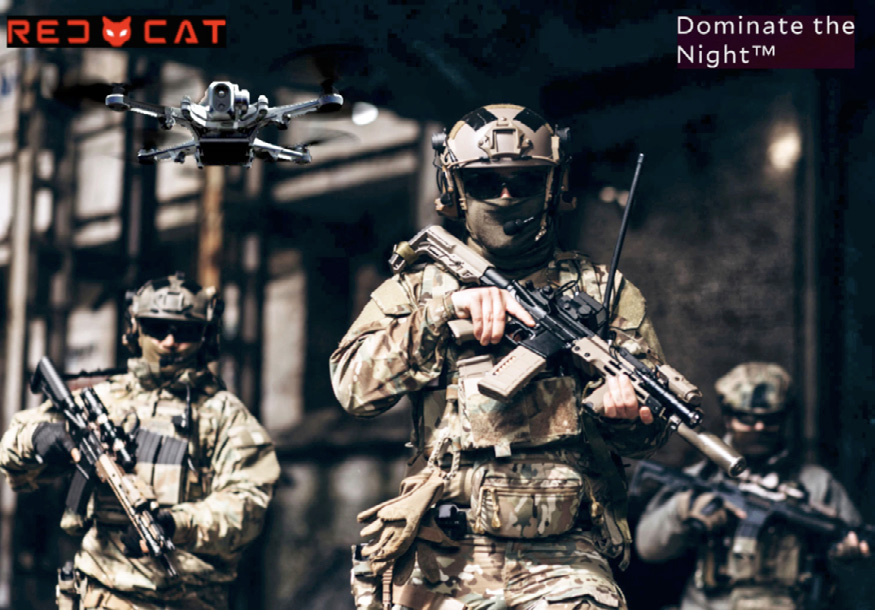
Anchored by Red Cat’s Teal Drones, the RFI unites innovative UAS hardware and software companies focused on AI/ML, swarming, FPV, command and control, and payloads.
Founding members include Ocean Power Technologies (NYSE: OPTT), Sentien Robotics, Primordial Labs, Athena AI, Unusual Machines, Reach Power, and MMS Products. The shared goal is advocacy, integrations and co-marketing that bridges considerable technology gaps through modular open architecture.
Red Cat developed this initiative to support the Pentagon’s desire to accelerate innovation for its Replicator initiative and the need for “attributable” autonomous systems across air, land, and sea. This includes the U.S. Army’s Short-Range Reconnaissance (SRR) Program. The consortium will collaborate to ensure requirements-based UAS production that meets the needs of specific missions, as well as reduce vendor lock-in and promote interoperability. The RFI will also focus on R&D and government advocacy that accelerates technology maturation.
Red Cat subsidiary Teal Drones builds its Teal 2 system, designed to support U.S. and allied military operations, public safety organizations, and government agencies, at its Utah facility. Teal 2 is a cost-effective, man-portable sUAS designed to “Dominate the Night™” that has best-in-class night vision, multi-vehicle control support, and a fully modular design. It is both Blue UAS Certified and FAA Remote ID approved. Through technology partnerships, the RFI will exponentially expand the use cases for Teal Drones into multi domain (air, land, and sea) operations.
As a member-based consortium, RFI welcomes broad industry participation by companies of all sizes. Membership benefits include formal marketing support, dual reseller agreements, event and conference collaboration, letters of support for government lobbying, and inclusion in a technology “menu” for visibility and RFQs on the Teal website.
“The need for the UAS sector to move quickly to meet the requirements of Replicator is more urgent than ever,” said Jeff Thompson, Red Cat CEO. “The needs of warfighters have shifted dramatically over the past several years, and the key to bridge technology gaps and accelerate maturation is co-innovation amongst hardware and software companies that span the entire value chain. The RFI will spearhead this mission and be a central place to showcase new capabilities and industry voices.”
“One of many Teal Drone advantages is the modular design that allows for effortless swapping of propulsion, payload and other hardware based on the specific needs of warfighters,” said Jason Gunter, Red Cat Director of Special Programs. “Additionally, with Teal as a hub, we’ve already built a robust ecosystem of partners that specialize in AI and computer vision applications, 3D mapping, target acquisition, swarming, and other sUAS decision support features. The RFI formalizes this but is also a launchpad for co-marketing, tech collaboration, and grassroots advocacy.”
About Red Cat, Inc.
Red Cat (Nasdaq: RCAT) is a drone technology company integrating robotic hardware and software for military, government, and commercial operations.
Red Cat’s solutions are designed to “Dominate the Night™” and include the Teal 2, a small unmanned system offering the highest-resolution thermal imaging in its class.
SSC achieves operational acceptance of OPIR Battlespace Awareness Center (OBAC) on FORGE
Space Systems Command’s Space Sensing program executive office, headquartered at Los Angeles Air Force Base in El Segundo, California, has delivered the first of two software deliveries to operations in the Overhead Persistent Infrared (OPIR) Battlespace Awareness Center (OBAC) at Buckley Space Force Base, Colorado.
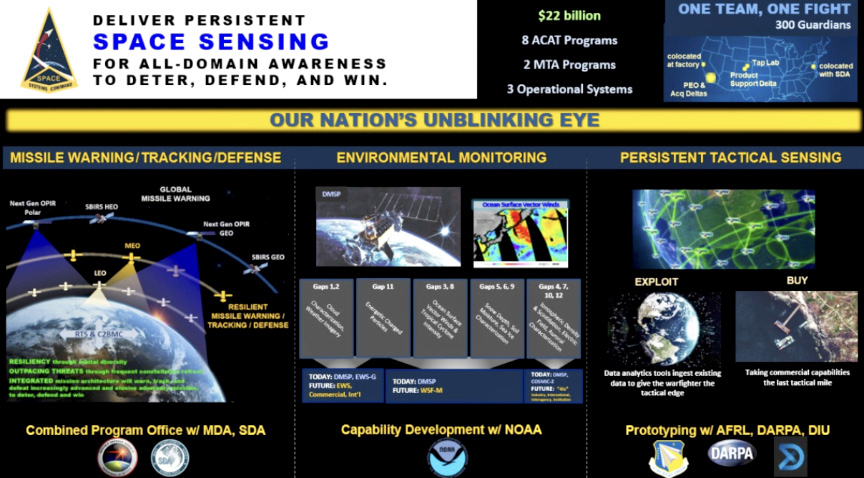
Delivery of the FORGE framework to the OBAC provides increased cyber resilience, and enhanced mission applications to operators. OBAC operations on FORGE bolster the OPIR battlespace awareness and technical intelligence missions with significant cyber-security improvements and enhanced missile detection and tracking. Additionally, the operational trial period preparing for this delivery provided opportunities to significantly stress the FORGE framework with real-world events.
Notably, the framework performed in family with the legacy system, enabling the battlespace awareness and technical intelligence mission as the OBAC’s operational baseline. Proven sustainment of mission capability on the FORGE framework is essential to ensure coordination of a successful defense against threats around the world.
The FORGE capability architecture is foundational to provide OPIR data to operational warfighters, and to enable the U.S. Space Force’s pivot to a resilient missile warning, tracking, and defense architecture. FORGE provides a modern, cyber-resilient, flexible, scalable, and government-owned open architecture needed to support the development, integration, and delivery of OPIR processing applications for rapid response to emerging threats.
The FORGE framework facilitates open architectures that maximize utilization of the OPIR constellation as well as accelerating the ability for new capabilities to be added frequently and efficiently. It enables the use of existing Commercial Off-The-Shelf (COTS), Government Off-The-Shelf (GOTS), and Free or Open- Source Software (FOSS) products, enabling a rapid pivot to new solutions depending on mission needs. This approach expands opportunities for a wide range of vendors, thus empowering the government to have access to the latest industry innovations while simultaneously strengthening and increasing resiliency in the weapon system and industrial base.
Marking a significant step toward transforming the Nation’s ability to respond to new missile threats by considerably reducing the time between development and operations, this operational delivery provides new OPIR capabilities to the 2d, 8th and 11th Space Warning Squadrons, as well as the 64th Cyberspace Squadron.
This effort will demonstrate the ability to host vital data processing applications on the FORGE Framework, while in an operational environment, during a robust Operational Acceptance (OA) campaign.
“Our Nation’s ability to quickly sense and make sense of OPIR observations is crucial in maintaining decision-making advantage against adversarial threats and their advanced missile technologies,” said U.S. Space Force Col. Robert Davis, Space Force program executive officer for Space Sensing. “This effort enables target tracking earlier
and for a longer duration, which significantly increases the event custody chain. Timely response to threats requires a modern architecture capable of hosting data from a range of new and
legacy sensors that enables the development of applications to address these threats. FORGE’s modular architecture with an agile development approach is showing that you can deliver fast even in tough, complex mission areas. I’m extremely excited about what the combined government and industry team has already been able to do, and I look forward to the next operational capability delivery.”
“This first delivery is the start of many deliveries to come,” said U.S. Space Force Lt. Col. Morgan Sparks, FORGE materiel leader. “Our next delivery will build on our cyber resilience and provide even greater capability to the warfighter, modernizing the operator interface with modern data visualization technologies while significantly improving our nation’s ability to detect stealthier and additional quantities of threats sooner, and to track them longer. We look forward to continuing to build upon this strong foundation to enable faster deliveries to operators.”
“Partnerships with the operations community have been paramount in our development process,” said Mr. Jonwa Kim, senior materiel leader, Strategic Missile Warning Ground Delta. “It is through the strength of these partnerships that will ensure our nation possesses the most advanced strategic missile warning capabilities to meet new and emerging threats.”
“Ensuring our acquisition efforts further enable operators to combat space threats is paramount in our procurement and development processes,” said U.S. Space Force Capt. Malik McCoy, FORGE framework program manager and former Space Delta 4 operator. “Our shoulder-to-shoulder partnership with operational users provided relevant perspectives and shaped our approach. We drove cyber resilience and advanced mission applications into the system, transitioning our legacy systems to a more modern architecture. These efforts are paramount to provide a timely defense to counter new and and emerging missile threats.”
GA-ASI selected to build CCA for AFLCMC
General Atomics Aeronautical Systems, Inc. (GA-ASI) has been selected to build production representative flight test articles of the Collaborative Combat Aircraft (CCA) for the U.S. Air Force Life Cycle Management Center’s (AFLCMC) Advanced Aircraft Division.
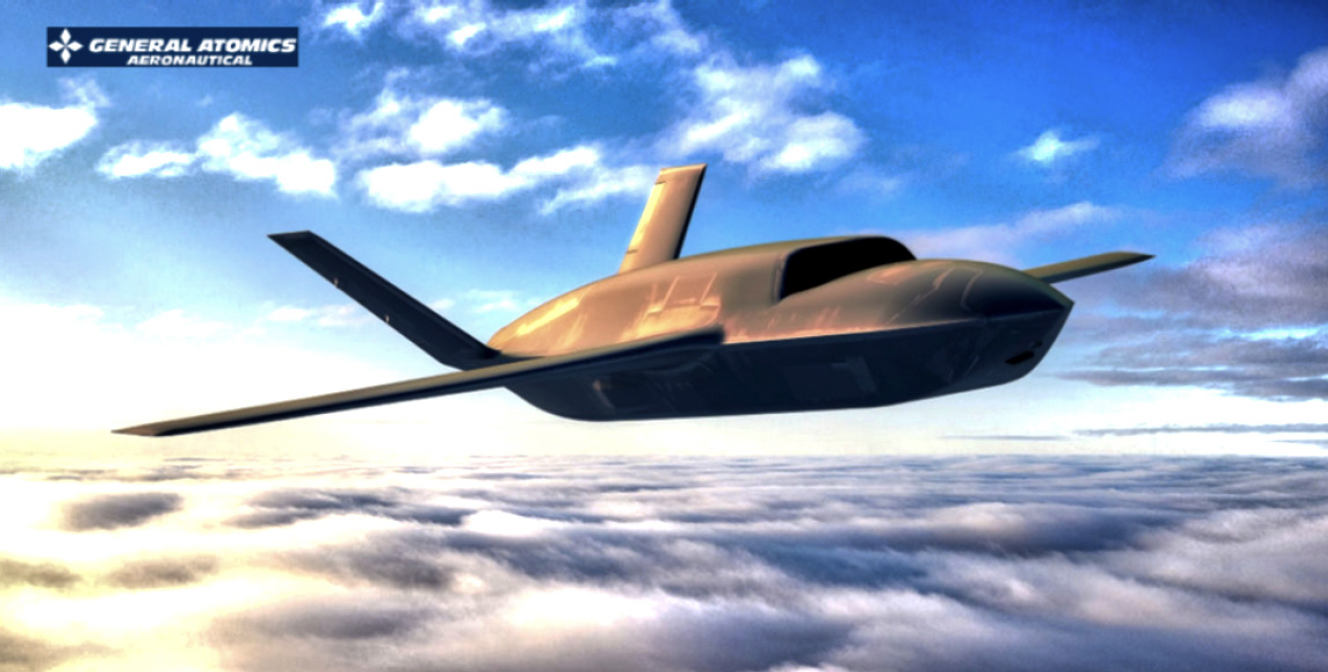
This option contract award by the Advanced Aircraft Division exercises the critical design, build, and flight test on the existing CCA contract with GA- ASI following an initial 6-month phase that culminated in a successful CCA preliminary design review (PDR) earlier this year.
The CCA program aims to be a force multiplier, developing a low-cost, modular, unmanned aircraft equipped with advanced sensors or weapons and operating in collaborative teams with the next generation of manned combat aircraft.
In February 2024, GA-ASI successfully conducted the maiden flight of the XQ- 67A CCA prototype aircraft validating the “genus/species” concept pioneered by the Air Force Research Laboratory (AFRL) as part of the Low-Cost Attributable Aircraft Platform Sharing (LCAAPS) program.
This program focused on building several aircraft variants from a common core chassis. Since then, this prototype for CCA has successfully completed two additional test flights, laying the groundwork for a successful production and flight test program. GA-ASI’s CCA production representative design is based upon the XQ-67A Off-Board Sensing Station developed by GA-ASI for the AFRL.
To complement the CCA contract, GA-ASI will continue to conduct a series of autonomy and mission system tests on the MQ-20 Avenger® UAS and XQ-67A to accelerate the readiness of operational autonomy. These live flight tests will continue to demonstrate the readiness of the full mission capability to support the emerging U.S. Air Force Autonomous Collaborative Platforms (ACP).
“The CCA program redefines the future of aviation and will shape the USAF acquisition model to deliver affordable combat mass to the warfighter at the speed of relevancy,” said Mike Atwood, Vice President of Advanced Programs for GA-ASI.
“Throughout our 30-year history, GA-ASI has been at the forefront of rapidly advancing unmanned aircraft systems that support our warfighters,” said GA-ASI President David R. Alexander. “The USAF is moving forward with GA-ASI due to our focused commitment to unmanned air-to-air combat operations and unmatched UAS experience, ensuring the production of the CCA aircraft at scale to deliver affordable at mass for the warfighter.”
Kratos Defense & Security Solutions completes Zeus Solid Rocket Motor (SRM) development
Kratos Defense & Security Solutions, Inc. (Nasdaq: KTOS) has announced that the company’s Space & Missile Defense Systems (SMDS) Business Unit, a part of Kratos’ Defense & Rocket Support Services (DRSS) Division, has successfully completed the static test firing of the Zeus 2 solid rocket motor (SRM) with Aerojet Rocketdyne, an L3Harris Technologies [NYSE: LHX] company, at their Camden, Arkansas facility.
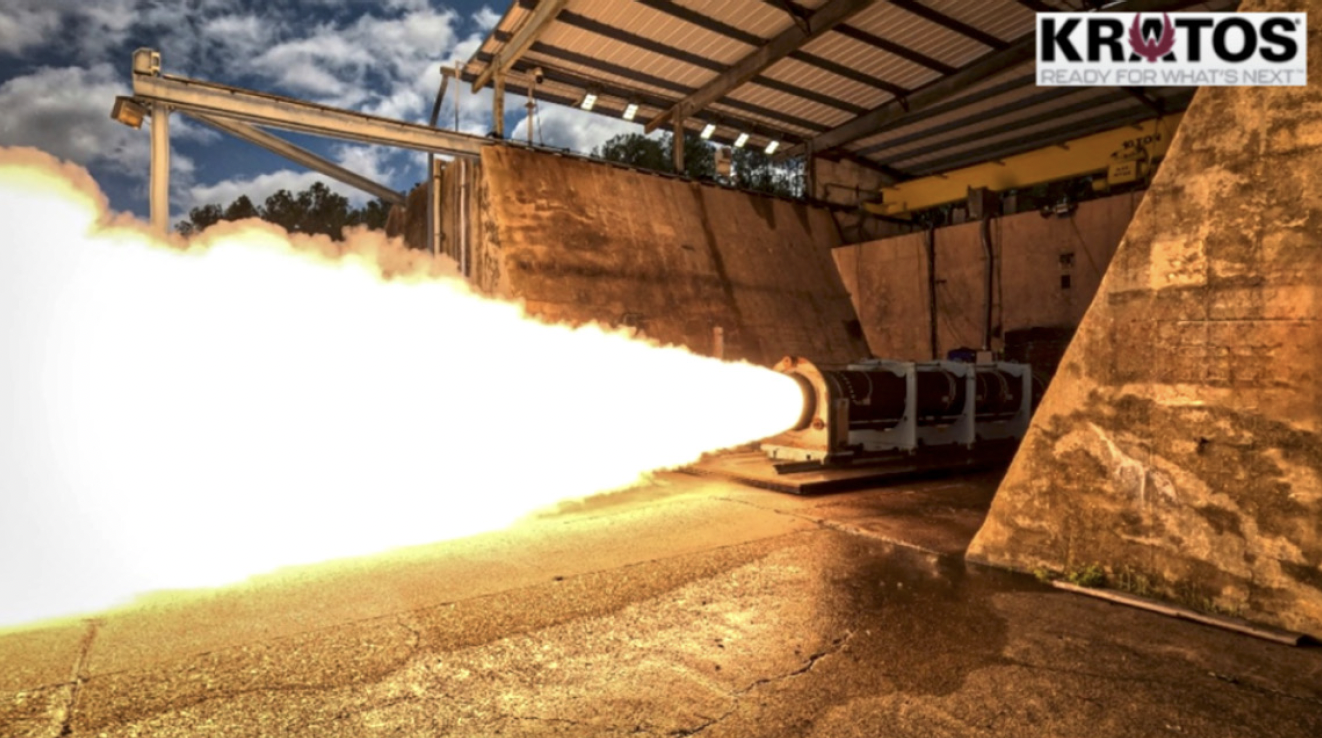
This Zeus 2 milestone, combined with the successful Zeus 1 static test firing last year, completes the development phase of Kratos’ new and affordable, SRM family. Zeus 1 and Zeus 2 are high-performance 32.5-inch diameter solid rocket motors envisioned and internally funded by Kratos.
The Zeus motors, designed with commonality, versatility, and affordability in mind, coupled with the Kratos ongoing development of the Erinyes and Dark Fury Hypersonic Flyers demonstrates Kratos’ commitment to investing in crucial defense industrial base technology.
Kratos’ technology investments are delivering leading-edge systems and expanding our extensive portfolio of Hypersonic Flyers and SRMs available for customers.
Kratos has now initiated orders for a combined total of nine Zeus 1 and Zeus 2 SRMs in preparation for upcoming customer flights.
The Kratos developed Zeus family of SRMs is in direct response to the urgent need for affordable commercial launch vehicle stages for hypersonic test, ballistic missile target, sounding rocket and other customer missions.
Dave Carter, President of the KDRSS Division, said, “I am very excited to introduce Kratos’ family of Zeus SRMs and commend our SMDS group and teammate, L3HARRIS/Aerojet, for successfully completing this crucial motor development program. Zeus motors enable us to bring to market affordable rocket systems to support critical MACH-TB Hypersonic testing, NASA Sounding Rocket Program experiments, and Navy/MDA target program requirements.”
Eric DeMarco, President and CEO of Kratos Defense & Security Solutions, Inc., said, “Kratos’ successful completion of this internally funded Zeus family of motors will enable rapid and affordable hypersonic testing and be ‘first to market’ with a highly relevant system to support DoD, NASA and commercial customers. At Kratos, we are committed to rapid development, delivery of relevant systems and introduction of affordable technology to support warfighter requirements for the United States and its allies’ National Security.”

